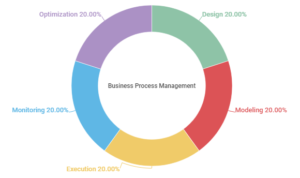How to Control Multi System Business Process

What is Business Process?
A Business Process is a sequence of tasks that an organization follows to bring the product to life or the service to reach the customers. A Business Process is basically a collection of related activities put one after the other in a fashion that it forms a flowchart with the description of rules followed and the data flow.
In a business process, two or more processes can work congruently or parallel which could contribute to delivering the final product or the final service. Managing one process at a time is comparatively easy as compared to managing more than one process.
Controlling Multi-System Business Process
Controlling a multi-system Business Process becomes difficult if a proper sequence or structure is not followed. While dealing with multi-system business processes, the definition of rules to be followed plays a very important role. As the rules crucially define the input to and output from each process, to help avoid redundancy and any clash of interests between the processes.
Every organization requires a special management team who can look forward to series of steps and assure if they are properly followed. To control the multisystem environment in a business process one must follow the cycle of steps and work around with the management of these concepts.
The concepts to be followed are described below:

Modeling:
As the name indicates, modeling is the activity of methodically representing the processes of an enterprise such that the current process improves. It involves designing a process from its origination to its final stage. Modeling depicts the whole flow of the process, from its origination to its development phase to the final delivery of the product or the service. The modeling phase takes into account the inputs to the resources, accounts for the transformation, and shows the end product as the output. In case there is any other process that intersects the process you are defining, It is mentioned explicitly.
Deployment:
Deployment is simply the implementation of the business process that is implemented. This step is the actual execution of the process defined on paper. It falls in the launching phase.
Execution:
It is broadly about enacting the business processes that are discovered. Enacting a business process is done either manually or automatically. Sometimes the process involves a combination of manual and automated business tasks. Manual business processes are human-driven. Automated business processes are software-driven.
The interaction between the two processes with a different approach can be tricky. If one of the processes interacting is manual and the other is automatic, it is difficult to manage such multi-processes. In order to smoothly manage two such processes, you need skilled labor and artificial intelligence-enabled software.
Monitoring:
It involves process tracking and handling issue. Also, monitoring of business activities, key performance indicators, business / operational exceptions and business risks is done, as these activities are implemented in computer systems.
Analyze:
Extraction of real-time report and data comparison analysis is done. Overview report and detail report is generated and customization is done accordingly which helps to develop business performance.
Optimization:
It includes retrieving process performance information from modeling to monitoring phase; identifying the potential or actual bottlenecks and the potential opportunities for cost savings or other improvements and then, applying those enhancements in the design of the process.
Following these steps in Business Process Management is very helpful as it helps you understand every process very closely, helps you monitor all the processes well, and hence manage them well.
You may also like,
Take Action Now and Make a Difference
Feel Free To Contact Us for Further Information




